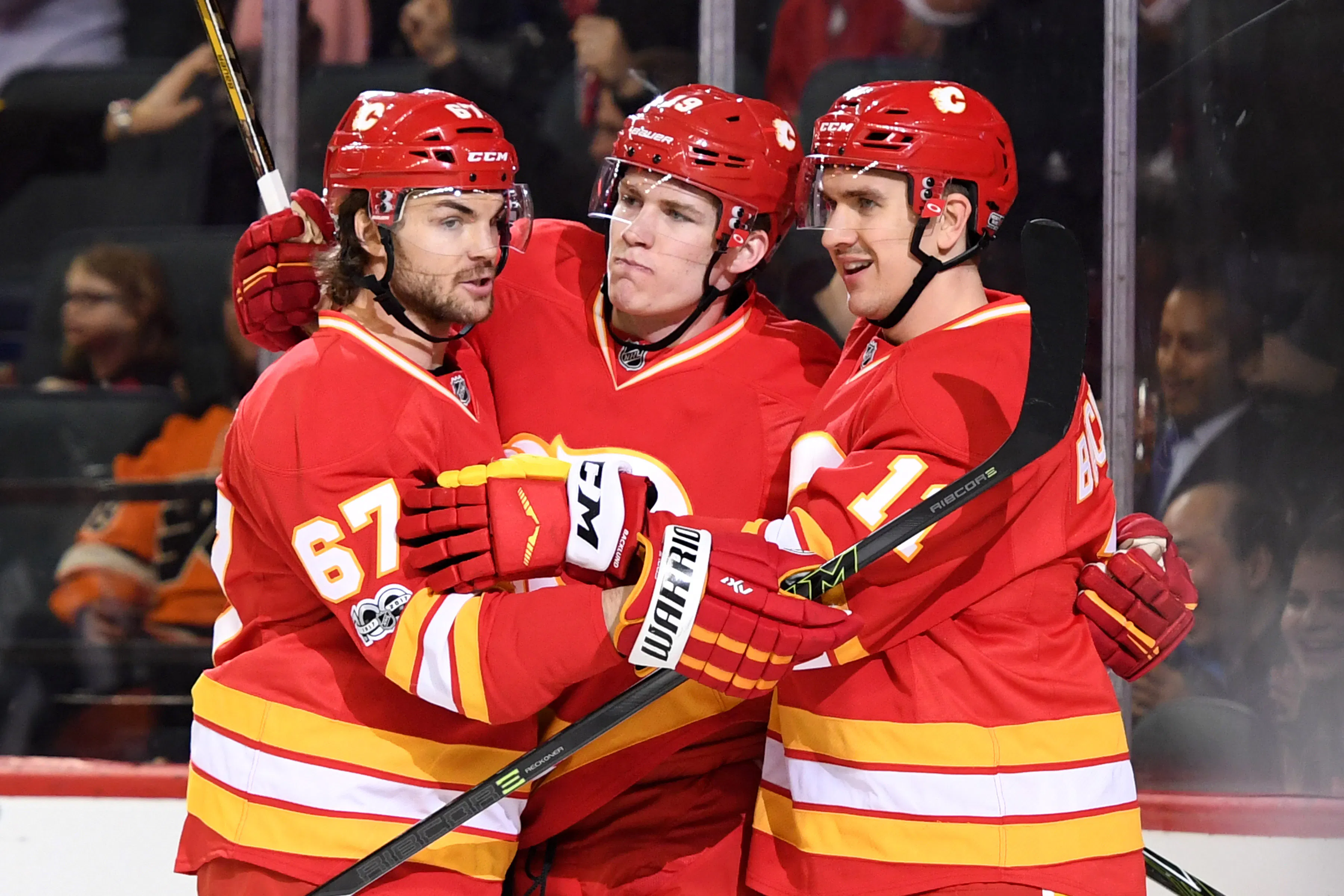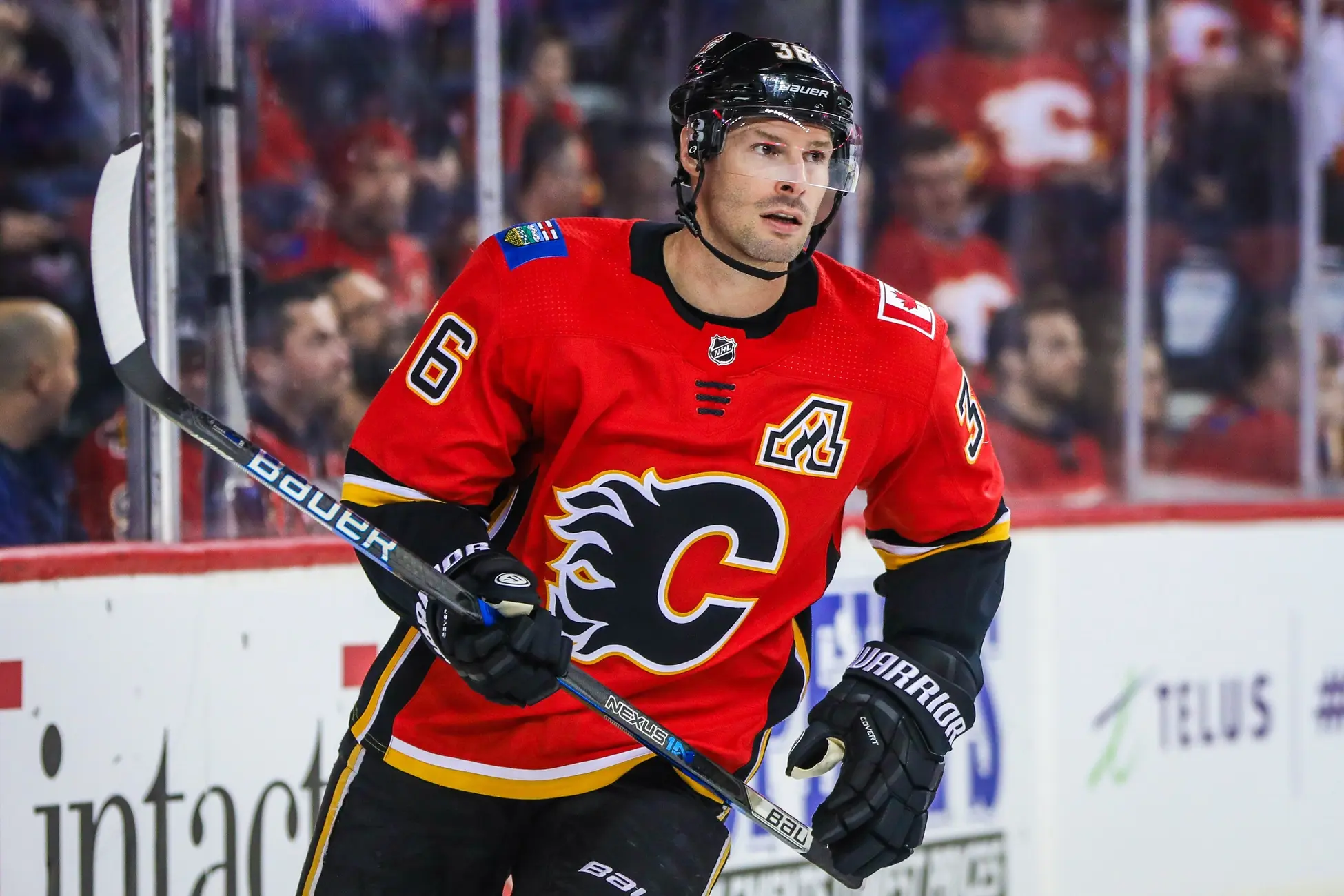A critical look at Glen Gulutzan’s tenure

To say Glen Gulutzan’s tenure as head coach of the Flames was an abject failure would be false. After taking a balanced look at his two seasons behind Calgary’s bench, my belief is he did more good for the team than not. I’m not saying there’s nothing to be critical of, but when looking at both sides of the coin, I think the positive outweighed the negative.
THE GOOD
Possession. I get it, shot metrics aren’t everyone’s cup of tea. However, in this day and age, you just can’t ultimately be successful long term without also being a decent possession team. Gulutzan transformed the Flames from a team playing an antiquated brand of hockey under Bob Hartley to one far more in line with how the game needs to be played today.
A quick comparison of Hartley’s final year and Gulutzan’s first paints a good picture of how drastically things changed from one year to the next.
| Season | CF% | Rank |
| 2015-16 | 48.0 | 22nd |
| 2016-17 | 50.5 | 10th |
With Hartley at the helm, the Flames relied too much on things like stretch passes and blocked shots for them to win games at a sustainable level. The contrast between Hartley’s brand of hockey and what Gulutzan brought to the table is even more stark when looking at aggregate totals over the course of their tenures.
| Coach | Seasons | CF% | Rank |
| Bob Hartley | 4 | 46.4 | 28th |
| Glen Gulutzan | 2 | 52.1 | 4th |
By no means is possession the only thing that wins games in the NHL. Winning the zone time battle is only part of the equation as teams like Calgary, Carolina, and Chicago will tell you this season. Here’s what I do know, though: teams that have shot rates hovering around 46% absolutely do not have success in the long run. Gulutzan changed the way this team played, and that was important.
The penalty kill. One of the big criticisms of Gulutzan and his staff was summed up for many by using the term “special teams”. In reality, though, that wasn’t accurate. Sure, the Flames struggled mightily this season on the powerplay (more on that later), but were actually very proficient when killing penalties.
Gulutzan and assistant coach Paul Jerrard ran Calgary’s penalty kill the last two years and both came with pretty good resumes in the craft. After some growing pains early on, the Flames settled into one of the league’s better PK units for most of the last two seasons. It was characterized by aggressive challenges at the blueline and “community clears” down low, and the results spoke loudly.
| Season | PK% | Rank |
| 2014-15 | 80.6 | T-20th |
| 2015-16 | 75.5 | 30th |
| 2016-17 | 81.6 | 12th |
| 2017-18 | 81.8 | T-7th |
Again, the contrast from Hartley’s final year to Gulutzan’s first season is fairly drastic. To go even further, Calgary went from an aggregate of 79.6% (27th overall) in four years under Hartley to 81.7% (10th overall) with Gulutzan.

Candice Ward-USA TODAY Sports
The 3M line. Put together early on in Gulutzan’s tenure, the trio of Mikael Backlund, Michael Frolik, and Matthew Tkachuk have done nothing but excel over the last 150 games or so. Over the last two seasons, no other line has played together more than these three guys have (1359:48) and it’s not even close. The trio of John Tavares, Josh Bailey, and Anders Lee with the Islanders is next and, at 1253:55, they’re more than 100 minutes behind.
I’d have had a hard time splitting that trio up, too. With offensive zone starts all averaging well under 50%, and with top shutdown assignments each and every night, no line has played more difficult minutes than this one has and they’ve excelled. All three of Backlund, Frolik, and Tkachuk are top end possession players over the last two seasons.
| Player | GP | CF% | Rank |
| Matthew Tkachuk | 144 | 56.6 | 5th |
| Michael Frolik | 152 | 56.2 | 7th |
| Mikael Backlund | 163 | 55.5 | 16th |
We’ll get into some of the frustrating elements of Gulutzan’s player usage later on, but one area he nailed it was with the 3M line. Gulutzan buried them with tough matchups and a ton of defensive responsibility because he knew he could and this was a great example of a coach slotting players in the right places to succeed.
Mark Giordano and Dougie Hamilton. For a few different reasons, Calgary’s top two defencemen barely played with one another in Hamilton’s first year with the team. Hartley was understandably reticent to put Giordano and Hamilton together, mainly because the former was coming off a great year paired with TJ Brodie. Gulutzan pulled the trigger on this duo early in his first season, though, and the results have been outstanding.
| Player | GP | CF% | Rank |
| Dougie Hamilton | 163 | 56.7 | 4th |
| Mark Giordano | 163 | 56.0 | 8th |
Over the last two seasons, Hamilton and Giordano are both top 10 possession players in roles where they’re asked to do it all. Out against top forwards virtually every shift, this pairing has defended well, helped the team generate shots and scoring chances, and both players have contributed a ton offensively.
Hamilton’s 30 goals over the last two years is the third highest total in the league among defencemen, trailing only San Jose’s Brent Burns (41) and Tampa’s Victor Hedman (33). Giordano is right in the same conversation with 25 goals over the same stretch, tying him for 12th. Much like the 3M Line, Gulutzan rode this pairing a ton and got a lot out of them as a result.
THE BAD

Sergei Belski-USA TODAY Sports
Player usage. Gulutzan made some head scratching lineup decisions in his two years with the Flames. Certain players were given way more opportunities than they probably should have, while other players were put in situations way over their head.
Troy Brouwer’s usage is the first example that jumps to mind for many. Despite subpar results right from the word go, it took more than half of Brouwer’s first season for Gulutzan to drop him down the depth chart. And, even with his five-on-five minutes reduced, he was still getting significant powerplay time.
In his two seasons with Calgary, Brouwer has averaged 1:49 of powerplay ice time per game. That puts him significantly ahead of players like Micheal Ferland, Sam Bennett, and Michael Frolik, which is tough to wrap your head around. Brouwer’s offensive upside is low at this stage and to see him continually fed prime powerplay minutes was frustrating for many.
The second example comes on the blueline. As we just outlined above, Giordano and Hamilton made up the team’s best pairing by a country mile, and yet weren’t consistently used as such. In fact, the ice time splits between the top pairing and the duo of Travis Hamonic and Brodie were extremely similar this season.
| Player | EV TOI/GP |
| TJ Brodie | 19:04 |
| Mark Giordano | 18:33 |
| Dougie Hamilton | 18:22 |
| Travis Hamonic | 17:48 |
Essentially, Gulutzan used his top two pairings equally, with Hamonic and Brodie seeing more difficult opposition on many nights. That just doesn’t make much sense to me. While Giordano and Hamilton thrived, Hamonic and Brodie struggled mightily together. As such, playing them as much or more than the team’s top pairing is hard to justify, specifically at five-on-five.
In-game management. This is one area Calgary upper management was most frustrated with during this coaching staff’s tenure. I never felt like Gulutzan was ruthless or tactical enough once the puck had dropped, instead relying on a balanced “roll four lines” approach. While that can work sometimes, there are also times to mix it up.
For instance, I was often left confused with Gulutzan’s decisions after an icing call. For me, seeing a third or fourth line trapped on the ice for a defensive zone faceoff means one thing: Johnny Gaudreau and Sean Monahan. Instead, very often we’d see Calgary’s fourth line out to take those draws, removing an opportunity to exploit a favourable matchup.
There are absolutely times to roll four lines and three pairings. However, late in close games, we probably saw too much of players like Brouwer and Matt Stajan, at least for my liking. Shortening the bench and chasing favourable matchups can get coaches into trouble sometimes, but it can also help win games. I never felt like Gulutzan was able to strike that balance.
The powerplay. I know you’ve been waiting for this one, because Calgary’s powerplay was one of the most frustrating elements of this season. How can a team with players like Gaudreau, Monahan, Tkachuk, Hamilton, and Giordano be so ineffective in this situation? And how did things swing so wildly from one year to the next?
| Season | PP% | Rank |
| 2016-17 | 20.2 | T-10th |
| 2017-18 | 16.0 | T-28th |
I know losing Kris Versteeg in late November stung the powerplay a little bit, but for one player’s subtraction to mess things up as much as it did is baffling. In reality, using Versteeg’s injury as a fallback excuse is probably burying your head in the sand; there were other things more culpable.
It took far too long for Gulutzan and assistant coach Dave Cameron to make any meaningful adjustments to a powerplay that became increasingly easier to defend. Their 1-3-1 top unit was static and often outdone by the team’s more traditional second grouping, yet the ice time numbers were completely out of step.
Furthermore, it took three quarters of this season to give Hamilton and Giordano a shot with the top unit. That would be easier to understand if the Flames were having even a modicum of success, but they weren’t. When you couple that with the continued usage of an ineffective Brouwer, you can see why this team had the league’s second worst powerplay (13.6%) from December on.
CONCLUSION
I thought Calgary should have given Gulutzan one more year behind the bench. Yes, the team underachieved big time in 2017-18, and part of that is on the coaching staff. But, Gulutzan also helped the team truly make the playoffs on merit the year before. With a couple of tweaks, I thought there was a good chance of a bounce back next year. Leading the way in that regard would have been swapping Cameron out for a coach with a better powerplay acumen.
More than anything else, Gulutzan turned the Flames into a team capable of succeeding in the modern NHL. Controlling the puck, spending more time on the attack and less time defending is how teams have success, as evidenced by the vast majority of teams still playing. That’s how Calgary played under Gultuzan and that’s why I think his time with the team yielded more good than bad.
Recent articles from Pat Steinberg





